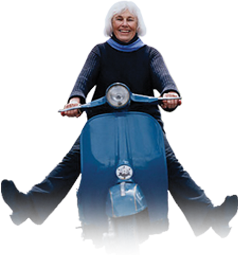A cystocele or bladder prolapse occurs when the tissues and muscles that hold the bladder in place are stretched or weakened. This change causes the bladder to move from its natural position and press against the front wall of the vagina, forming a bulge. A cystocele often occurs together with a prolapse of the urethra (urethrocele). Often these conditions occur with Stress Incontinence. In advanced cases, prolapse may cause blockage of urine.
Pessary
Some women with a cystocele benefit from a Pessary, a device worn in the vagina for support. It is important to avoid heavy lifting, maintain a healthy weight, and practice Kegel exercises. Medication such as estrogen might also help alleviate some of the symptoms. Eating high fiber foods are also recommended to help prevent straining that is associated with constipation.
Estrogen Replacement Therapy
Estrogen Replacement Therapy (ERT) — For women suffering with Vaginal Prolpase, Estrogen Replacement Therapy (ERT) may help to limit further weakness of the muscles and other connective tissues that support the uterus. The decision to use ERT must be made with your doctor after carefully weighing all of the risks and benefits. Vaginal application of estrogen has very few side-effects.
Cystocele Repair
Cystocele occurs when the tissues and muscles that hold the bladder in place are stretched or weakened. This change causes the bladder to move from its natural position and press against the front wall of the vagina, forming a bulge. In this procedure, the front vaginal bulge that contains the bladder is supported by tightening the tissue that has stretched. Foreign materials such as mesh are only rarely required




